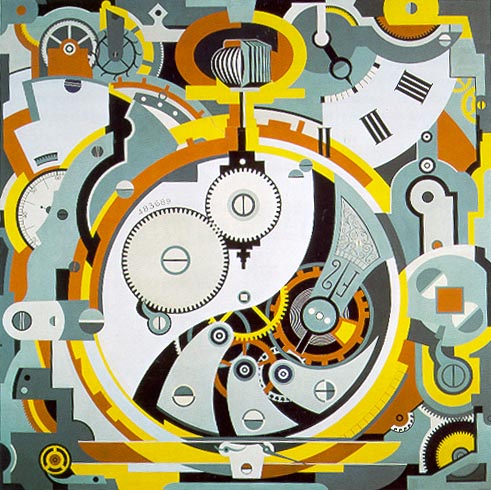
The work under consideration in the following paper named “Watch” (Fig. 1) is completed by Gerald Murphy in 1925. It is accomplished in oil on canvas with dimensions of 199.39 x 200.36 centimeters. Currently the picture can be found in Dallas Museum of Art. The main themes of the paper are centered on the mystery of watch and its mechanism that is able to go hand in hand with time and demonstrate the results of such going. The author dedicates his work to revealing this theme because he is fascinated with the principles that lie in the foundation of watch construction. The painting “Watch” is a typical work representing the art school of cubism, which acquired its popularity in the United States and in the world in the 1920s, and is considered to be the most influential art movement in the XX century. This work is full of details peculiar for cubism including abstraction; the prevalence of geometric forms and straight lines; and binocular vision.
Working on the “Watch”, Gerald Murphy was inspired by the ideas of watching time, chasing it, and trying to measure it. He was also especially fascinated by the inside structure of watch. Murphy marveled at the abundance of different part in its mechanism, and he was thinking about the fact that all of those tiny parts had their significant role in the efficiency of the work of watch. Describing the source of his inspiration, the painter said: “I am always struck by the mystery and depth of the interiors of a watch – its multiplicity, variety, and feeling of movements and man’s grasp at perpetuity.”
Studying the painting under consideration, the audience may notice that the parts of watch mechanisms, shown in it, belong to two different watch mechanisms. They had a special significance for Murphy. One of them was a representation of the watch designed for the Mark Cross department store, which had been the painter’s family company. The other watch was also of special meaning for the artist because it was a gift from his dear wife Sara. Thus, the painting “Watch” is more than just a cold depiction of watch mechanisms, which is fulfilled in bleak cubism; rather than that, it is the description of something that was precious for Murphy – something that reminded the artist about his loving family. Of course, the painting had a few more sources of inspiration along with depicting the objects reminding Murphy of his family. The period when the artist worked and created was a highly technological period in the history of the United States and the world. The ideas of technological triumph of humanity were filling the air during that period. Just like many of his contemporaries, Gerald Murphy is fascinated by the ideas of machinery’s productivity, efficiency, complexity, and accuracy. The painter expresses his inspiration on a huge canvas, and using charismatic colors such as yellow, dark orange, silver grey, and black. In a variety of high contrast colors, the audience may see the following technological objects: dials, gears, winders, hands, wheels, screws, pinions, arbors, billows, ramparts, rollers, and spindles.
Among the themes shown in the “Watch” painting is the theme of eternity of time. This theme was always inspiring for Murphy as he was a philosopher and enjoyed meditation on the deepness of such notions as time, its greatness, its endless duration, its invincibility, and its ever continuing character. The “Watch” also revealed the theme of triumph of technology in the XX century. The abundance of different parts of watch mechanisms aimed to render the ideas of technology vigor, accuracy, efficiency, and mightiness. The other important theme in this painting was the theme of interaction and cooperation. The artist disclosed this theme through an abundance of connections between different parts of the two watch mechanisms in his painting.
The place of the painting among the other art works of its period is of significant honor, which is explained by the fact that Murphy was listed among the best painters in the United States in the XX century for this picture and for a few master pieces of similar strength (Fig. 2 – the picture “Cocktail, 1927 – is beloved to be the best painting by Murphy). Gerald Murphy and his wife Sara (Fig. 3) were among the most significant characters between the representatives of the art of the XX century. They were both wealthy people, which was explained by their origin, but not like the other members of their families, they did not participate in family business affairs because they did not have an interest in them. The things that were really of great significance and interest for the couple were connected with art. On this reason, the couple moved to Paris, and began their life among the world’s cultural Bohemia. Gerald and Sara Murphy were very hospitable people, and they often invited different figures of art into their houses in Paris and on the French Riviera. Among their regular visitors were Ernest Hemingway, F. Scott Fitzgerald, Pablo Picasso, and many more.
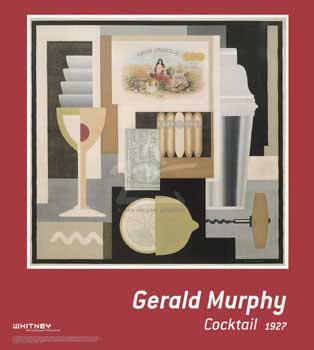
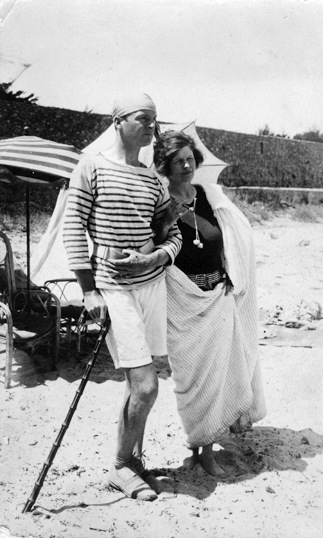
The painting “Watch” is accomplished in cubism, which was the most influential art movement during the first part of the XX century, and even of the whole XX century. The piece of art under consideration is a classical work of cubism, which can be seen in the geometrical forms shown in it, the concept of abstractions, binocular vision, and the choice of color harmony and lines. The “Watch” uses a variety of geometric forms that are peculiar to cubism, and what is more remarkable in this, is the fact that all of these forms are closely connected to each other, which is also another important feature of cubism. Besides, the picture is characterized by a high measure of abstraction in it because even though it depicts two watch mechanisms, due to the reciprocity of their parts, the whole impression that the picture produces is the impression of high measure of abstraction. In addition, the audience may see that the “Watch” is a classical representation of binocular vision that became the main peculiarity and the main finding of cubism painters. Finally, the picture uses clear and majorly straight lines along with high contrast color saturation of yellow, dark orange, silver grey, black, and white, which is very peculiar for cubism. If to compare the painting “Watch” with the other paintings fulfilled in classical cubism such as Pablo Picasso’s “Les Demoiselles d’Avignon” (Fig. 4) and Vaclav Vytlacil’s “Still Life with Pitcher” (Fig. 5), it possible to see that these pictures have a lot in common in the concepts of their accomplishment, and particular, in their geometric forms, straight lines, the use of highly contrast colors, binocular vision, and the use of abstraction. Thus, a conclusion can be made that Murphy’s painting is a vintage representation of its time period and the school of painters it belongs to.
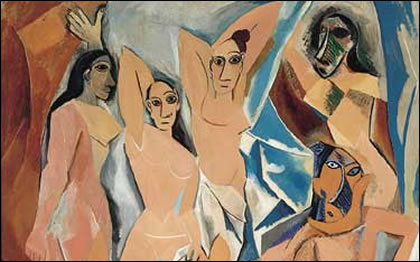
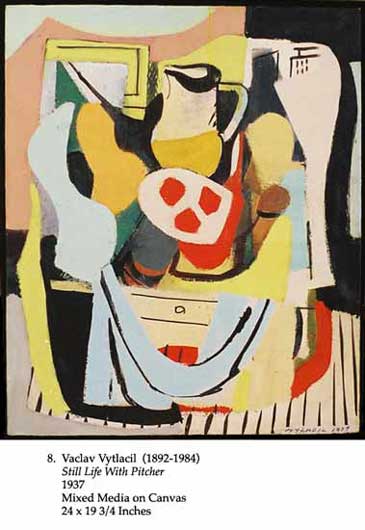
A specific art historical context of watch, which is in the fact that the picture represents the art movement of cubism, has its close connection with the picture’s historic context as well. In particular, the art movement of cubism received its popularity on the reason of the spread of the ideas of technological progress and industrialization. In the 1920s, the process of implementing high level technologic solutions in the world’s economy and manufacturing became the most active since the beginning of industrialization. Inspired by incredible progress, people started being fascinated by the unbelievable prospects to be higher that ever before, and achieve mind-boggling advancement. This had its reflections in every major area of human life including art. One by one, the artists, sculptors, architectures, and even musicians began to realize the ideas of the triumph of technological progress in their works. As the machine age was in its full progress and roared at full tilt in the first part of the XX century, avant-garde artists saw an opportunity to render the ideas of technological transformation into the new stages of development in their works, and they, thus, began the era of modernism. To show the triumph of technology in the works of arts, the masters ‘achieved unachievable’ in juxtaposing the uncomplimentary things, they embraced collage, and made multiple montage of ideas and materials that had been always considered incongruent.
In conclusion, Gerald Murphy‘s “Watch” (1925) can be described as featuring an abundance of geometrical forms, unexpected montage, abstract motives, binocular vision, and the highly contrast color harmony of yellow, silver grey, dark orange, black and white, and straight lines, which relates it to the popular art movement of the XX century called cubism. Such artistic techniques were often used by cubists to affect their audience and create an impression of symbolic and philosophic overtones. The significance of this work of art can be acclaimed as very important for the understanding Murphy’s philosophic approach to his works and his overtones regarding the triumph of technology and industrialization. The picture “Watch” also makes a great contribution to the development of cubist and modernist way of thinking by means of expanding on the ideas of montage, collage, and interplay between the different parts of a piece of art.
References
Corn, Adam. “Beloved Patrons”. Hudson Review 61.1 (2008): 178-188. Print.
Corn, Wanda. The Great American Thing: Modern Art and National Identity, 1915-1935 (Ahmanson-Murphy Fine Arts Books), The United States: University of California Press, 2001. Print.
Johnson, Paul. A History of the American People, The United States: Harper Perennial, 1999. Print.
“Murphy, Gerald; And Murphy, Sara.” Britannica Biographies (2012): 1-5. Print.
Rubin, William Stanley. The Paintings of Gerald Murphy. New York: Museum of Modern Art, 1974. Print.
Saccoccia, Susan. “Life As Art.” Humanities 28.4 (2007): 26-29. Print.
Saccoccia, Susan. “Socialites turned artistic luminaries.” Christian Science Monitor (2007): 19-26. Print.
Zabel, Barbara. Assembling Art: The Machine and the American Avant-Garde, The United States: University Press of Mississippi, 2004. Print.